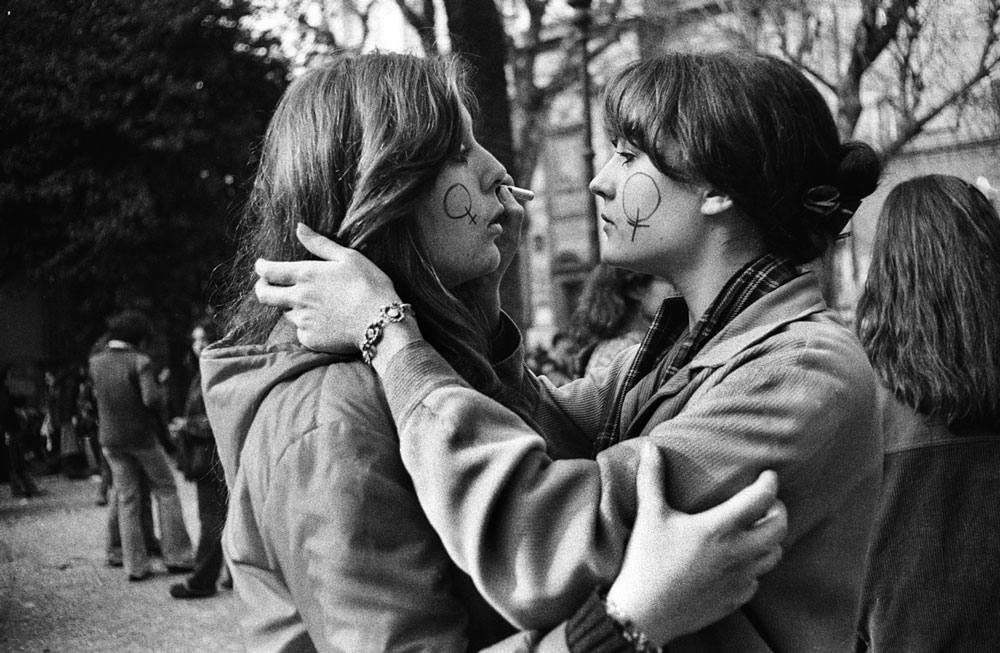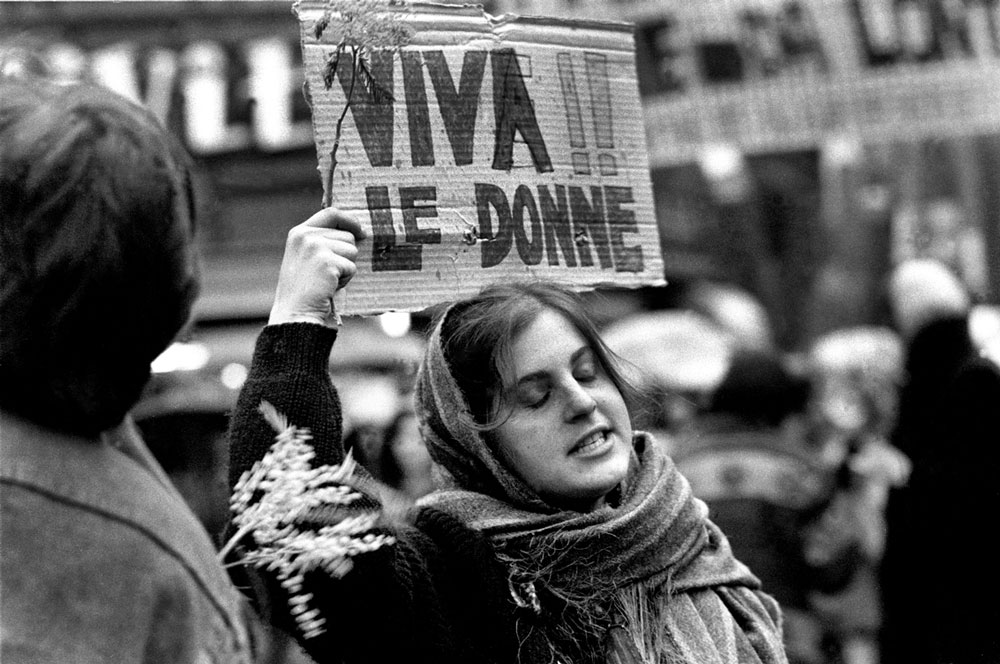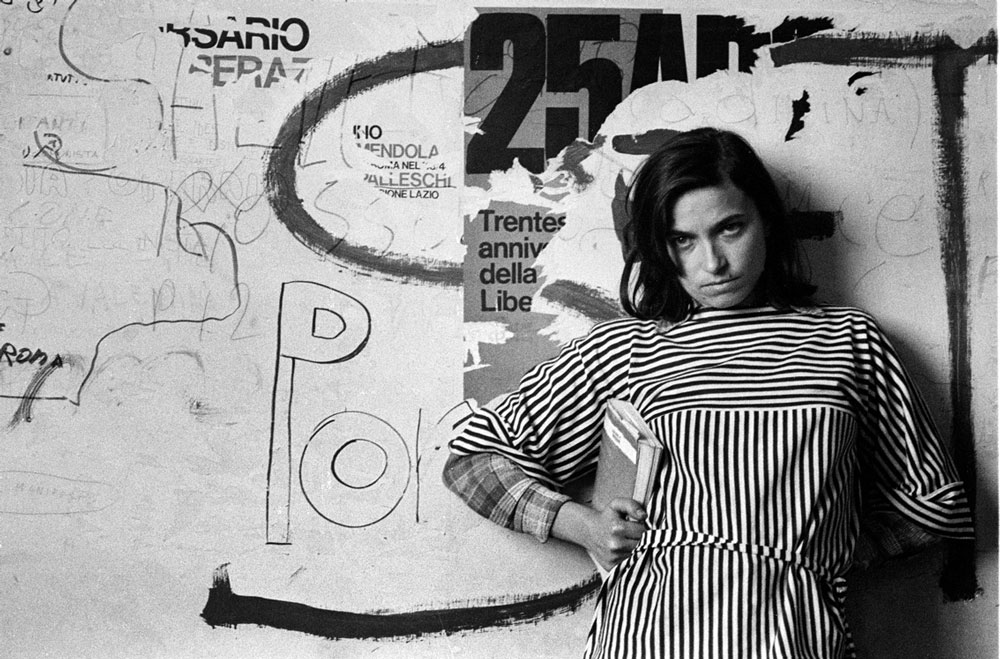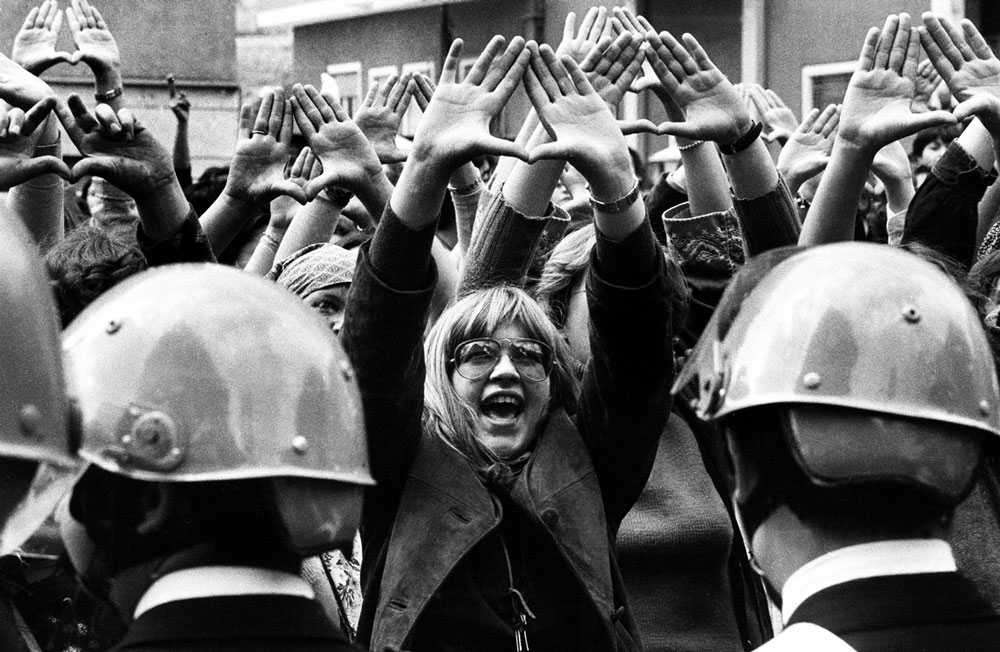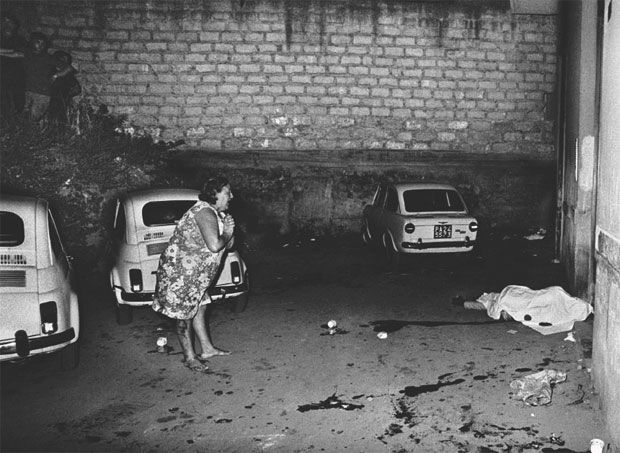PHOTO:Nomadic Subject
 The exhibition “Nomadic Subject” brings together the images of five Italian women photographers from the mid-1960s to the 1980s, to convey different perspectives on the experience, representation and interpretation of feminine subjectivity in a period of sweeping social change for Italy. Years of transition from radical political engagement to hedonism, years of terrorist violence but also of civil achievements, brought about mostly by women and the struggles of feminism.
The exhibition “Nomadic Subject” brings together the images of five Italian women photographers from the mid-1960s to the 1980s, to convey different perspectives on the experience, representation and interpretation of feminine subjectivity in a period of sweeping social change for Italy. Years of transition from radical political engagement to hedonism, years of terrorist violence but also of civil achievements, brought about mostly by women and the struggles of feminism.
By Dimitris Lempesis
Photo: Centro Luigi Pecci Archive
The exhibition “Nomadic Subject” presents over 100 images to document a period of about twenty years: it bears witness to the rise of new, multiple expressive urges, which though not constituting a “feminine specificity” offer a perspective of women on women and their identity. The title of the exhibition refers to the ground-breaking anthology of essays by Rosi Braidotti “Nomadic Subjects: Embodiment and Sexual Difference in Contemporary Feminist Theory” (Cambridge: Columbia University Press, 1994), in which the philosopher outlines a new sexual subjectivity that is multiple, multicultural and stratified, like the subjectivity represented in the images of the photographers included in this show. In Italy the full acceptance of female press photographers, art photographers and artists in the system of art and journalism began in the 1960s, in step with the socio-political changes and multiple demands brought about by feminism. Though belonging to different generations, all the photographers in the show have come to grips with the social transformations in progress in the Italian society, giving rise to very personal reflections on the image of women, and more specifically on feminine identity and its encroachments, the sense of otherness seen through a sensibility that has elaborated and absorbed the idea of difference. In this period, the medium of photography became the tool par excellence with which to represent a new central role of women’s bodies and their transformations, personal experiences and family life, the relationship between private memory and collective history. The images in the exhibition share in the representation of a vast and unconventional female universe in the wider sense of the term, where the body is not just the object of an external, prevalently male gaze, but become an active subject, a vehicle with which to express other non-standardized, non-heterocentric values. The feminine image is thus the central focus, an image that is amplified, revealed and deconstructed, becoming a vehicle of non-bourgeois values, but also a vivid representation of an inner life that is able to break free of stereotypes. In 1969 Paola Agosti began to work as a freelance photographer, traveling in Europe, South America, the United States and Africa, where she met and made portraits of political leaders, cultural figures and artists of international renown. She has paid particular attention to the faces and issues of the feminine world. Her investigations of rural poverty in Piedmont, the history of emigration from that region to Argentina, and her photographs of the protagonists of European 20th-century culture, led to the creation of books and exhibitions on these themes. From 1976 to the present she has published countless photography books and shown her images (some of which are included in the permanent collections of various museums) in Italy and abroad. In recent years she has also concentrated on books that focus on family memories, individual stories that become History. Letizia Battaglia is known for her works showing the victims and personalities of the world of organized crime, but she is not only the “photographer of the mafia”: she is known as one of the most outstanding figures of contemporary photography, for her works that have been absorbed in the collective imaginary, and for the civil and ethical values she has emphasized through photography. Elisabetta Catalano lived and worked in Rome. As an internationally acclaimed portraitist, she bore witness to the lives of artists and personalities of literature, art, entertainment and culture in general, across the history of Italy from the 1970s to the present. Her career began with Vogue Italia, Il Mondo and L’Espresso, extending into the entire Italian and foreign press. In 1971 she worked in New York for Vogue America and in Paris for Vogue France, photographing fashion and entertainment personalities and social life. In the 1970s she decided to concentrate on portraiture and photographed the most important artists of Avant-Garde movements in her studio in Rome, including Alighiero Boetti, Joseph Beuys, Gilbert & George, Sandro Chia, Enzo Cucchi, Francesco Clemente, Cesare Tacchi, Jannis Kounellis, Michelangelo Pistoletto, Vettor Pisani and many others. In 1960 Lisetta Carmi abandoned a career as a pianist to work with photography, seeing it as a tool of political engagement and a way to conduct in-depth existential research through perspectives on others. After initial experience at Teatro Duse, in the 1960s and 1970s she produced photographic reports of documentation and social protest, including coverage of the difficult working conditions of the longshoremen of Genoa. She has created photographic narratives that stand out for an ability to get beyond currently accepted viewpoints and to grasp the inner lives of people with particular intensity and drama. From 1958 to 1967 she repeatedly visited Israel, to gain a better understanding of the meaning of belonging to the Jewish people, and in the 1970s she traveled extensively in Afghanistan and India, countries in which she discovered a vision of life more in tune with her own feelings. Her periods in the Orient culminated in the encounter with the Hindu guru Babaji, leading to a second turning point in her life. At Cisternino, in Apulia, she founded an ashram to spread the teachers of the guru and to focus on the rehabilitation of drug addicts. Marialba Russo studied painting at the Academy of Fine Arts of Naples and approached photography towards the end of the 1960s, a medium with which she mainly investigated the religious manifestations and folk celebrations of central and southern Italy. Alongside her personal research, she has worked with Vogue Italia and other Italian and foreign publications. In the years to follow Russo took part in various events and initiatives on photography in Europe andthe United States, while continuing to collaborate with several Italian universities, teaching courses in photography. In the 1990s her research shifted towards more intimate, analytical reflections in which landscape becomes a metaphor of an inner temporality.
Info: Curators: Cristiana Perrella and Elena Magini, Luigi Pecci Centro per l’Arte Contemporanea Luigi Pecc, Viale della Repubblica 277, Prato, Duration: 13/12/18-8//3/19, Days & Hours: Tue-Fri 10:00-20:00, Sat-Sun 10:00-23:00, www.centropecci.it


